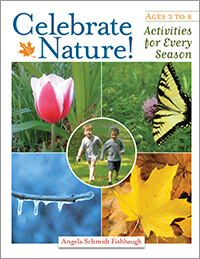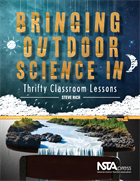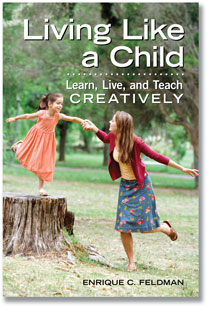Cultivating Outdoor Classrooms: Designing and Implementing Child-Centered Learning Environments
Eric M. Nelson, 2012 Red Leaf Press
· Collaborate with other teachers, administrators, and families to make your outdoor classroom a reality
· Create development and action plans to strategize and implement changes
· Evaluate your outdoor environment, program, and practices
Angela Schmidt Fishbaugh
2011, Red Leaf Press
Make nature an integral part of your classroom!
With rising childhood obesity rates and children's heavy use of electronics, the need for quality time in nature is greater than ever. Put away gadgets, turn off screens, and discover all that the natural world has to offer.
Celebrate Nature! is filled with hands-on activities to revive children's connections with nature. Each seasonal section—autumn, winter, spring, and summer—introduces seven themes with countless ways to integrate nature into your classroom. Chapters encourage reflection of your own memories of the seasons and provide activities that address science and discovery, math, blocks and building, language arts, reading, writing, dramatic play, art, and music. Also included are sample letters and suggested at-home activities to support family participation in this important learning.
With rising childhood obesity rates and children's heavy use of electronics, the need for quality time in nature is greater than ever. Put away gadgets, turn off screens, and discover all that the natural world has to offer.
 |
| Celebrate Nature! |
Celebrate Nature! is filled with hands-on activities to revive children's connections with nature. Each seasonal section—autumn, winter, spring, and summer—introduces seven themes with countless ways to integrate nature into your classroom. Chapters encourage reflection of your own memories of the seasons and provide activities that address science and discovery, math, blocks and building, language arts, reading, writing, dramatic play, art, and music. Also included are sample letters and suggested at-home activities to support family participation in this important learning.
Bringing Outdoor Science In: Thrifty Classroom Lessons
Steve Rich
2012, NSTA Press
 |
| Bringing Outdoor Science In |
When it’s just not possible to take students out to explore the natural world, bring the natural world to the classroom. Clearly organized and easy to use, this helpful guide contains more than 50 science lessons in six units: Greening the School, Insects, Plants, Rocks and Soils, Water, and In the Sky. All lessons include objectives, materials lists, procedures, reproducible data sheets, ideas for adapting to different grade levels, discussion questions, and next steps. Almost all the needed materials are inexpensive or even free (such as leaves and rocks), and if you do get the chance to venture outside, the lessons will work there, too. By using Steve Rich’s follow-up to his popular book Outdoor Science: A Practical Guide, you can introduce students to everything from bug zoos to the Sun and stars without ever needing to pull on a jacket.


















